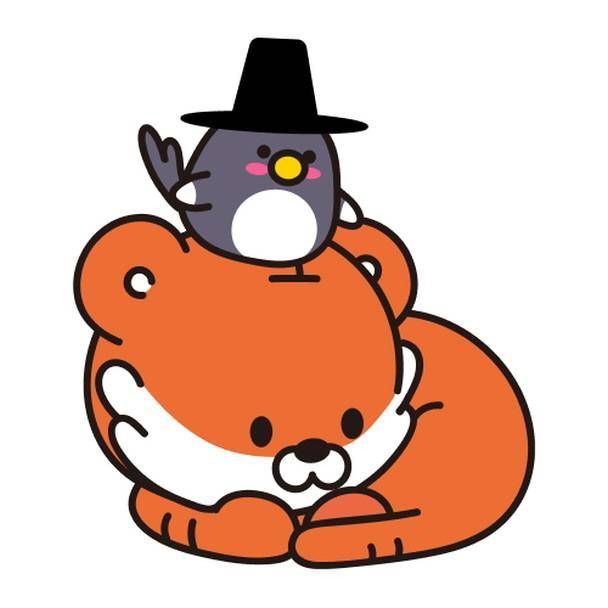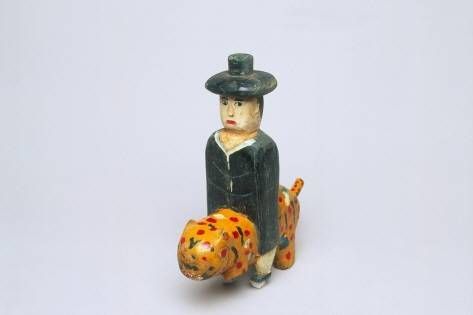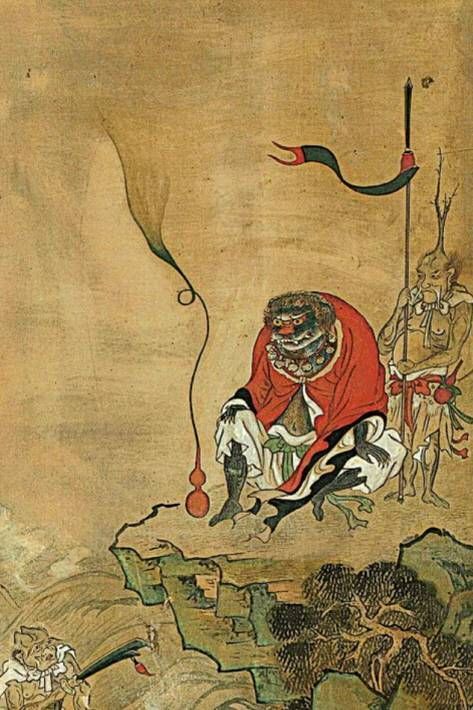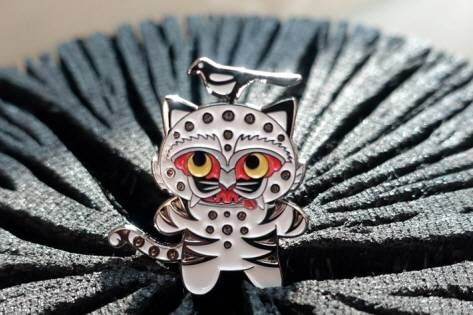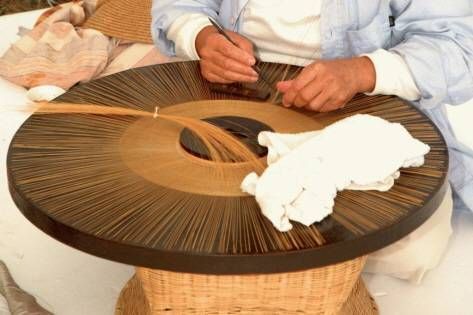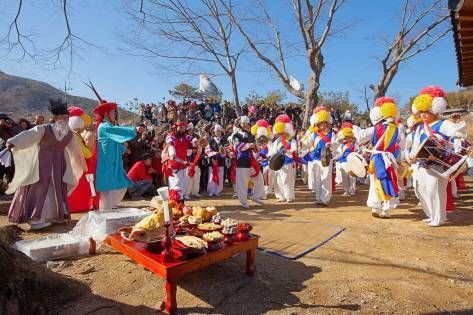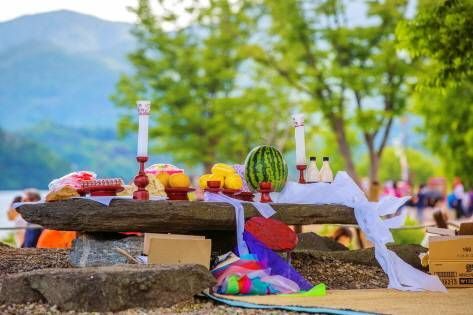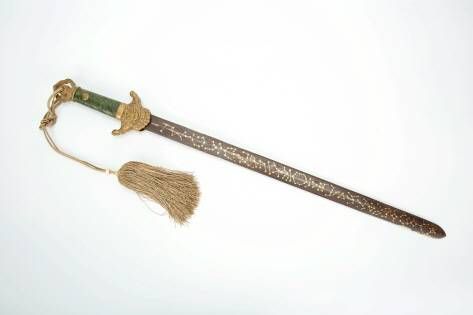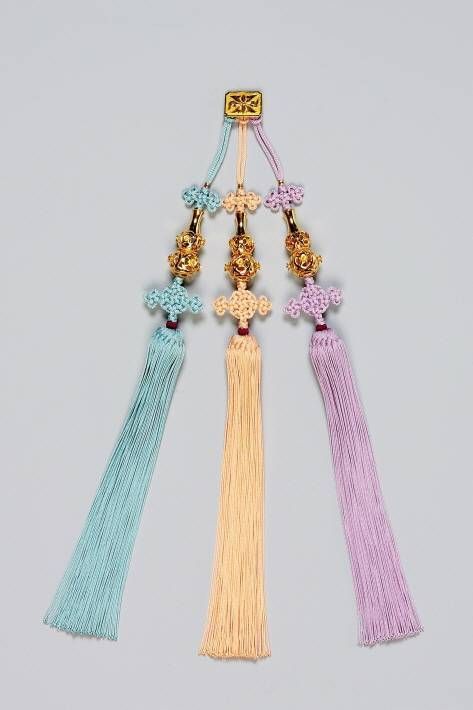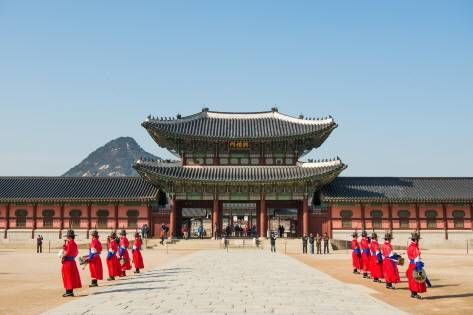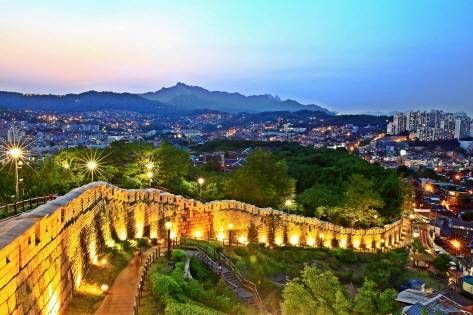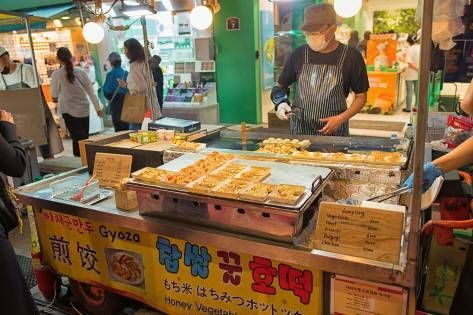- Log in
-
- Sydney Overseas Office
- London Overseas Office
- Toronto Overseas Office
- Los Angeles Overseas Office
- New York Overseas Office
- Ulaanbaatar Overseas Office
- Dubai Overseas Office
- New Delhi Overseas Office
- Manila Overseas Office
- Jakarta Overseas Office
- Hanoi Overseas Office
- Kuala Lumpur Overseas Office
- Singapore Overseas Office
- Bangkok Overseas Office
- Map
- Sydney Overseas Office
- London Overseas Office
- Toronto Overseas Office
- Los Angeles Overseas Office
- New York Overseas Office
- Ulaanbaatar Overseas Office
- Dubai Overseas Office
- New Delhi Overseas Office
- Manila Overseas Office
- Jakarta Overseas Office
- Hanoi Overseas Office
- Kuala Lumpur Overseas Office
- Singapore Overseas Office
- Bangkok Overseas Office
Travel Highlights
-
-
-
KPop Demon Hunters: Culture & Travel
-
08/01/2025
20.4K
-
21
11
-
-
-
-

KPop Demon Hunters ⓒCourtesy of Netflix
The Netflix animated film “KPop Demon Hunters (2025)” sparked a global K-content sensation upon its release, captivating audiences in over 30 countries. Blending the dazzling visuals of K-pop with shamanism and traditional Korean folktales, the film has opened a new window into the rich depths of Korean culture. Let’s dive into the cultural elements woven into the story and explore travel destinations where you can experience their lasting resonance.
1. Korean Culture Through Characters
① Messengers of Good Fortune: The Tiger and Magpie
Jakhodo (Paintings of tigers and magpies) ⓒNational Museum of Korea / Hojong & Kawoo
The tiger “Derpy” and the magpie “Sussie” steal the show with their mysterious aura and playful charm. These two messengers, who connect the hunter Rumi and the evil spirit Jinu, were directly inspired by “Jakhodo,” a genre of traditional Korean folk painting that features tigers and magpies. In Korean culture, tigers are seen as mystical beings that ward off evil and misfortune, while magpies are considered bringers of good news. The Korea Tourism Organization’s beloved mascots, “Hojong” the tiger and “Kawoo” the magpie, are also inspired from these symbolic animals.
② Saja Boys & Demons: A Modern Take on Korean Spirits
Grim Reaper (Jeoseung saja) ⓒNational Folk Museum of Korea / Figures of the Deceased (Sijasang) ⓒNational Folk Museum of Korea
The name of the fictional idol group “Saja Boys” subtly reveals their true identity. In Korean, saja can mean 'messenger of death' or refer to the dead, which directly connects to the concept that the members are not living humans but spirits. Their role—leading fans’ souls to the afterlife—also mirrors that of the jeoseung saja, Korea’s traditional grim reapers. These reapers, according to folklore, are agents of King of the Underworld, who escort souls to the realm of the dead.
Roof Tile with Dokkaebi Motif ⓒGyeongju National Museum / Evil Spirit in the Form of a Dokkaebi ⓒNational Folk Museum of Korea
What inspired Gwi-Ma, the ruler of the underworld, and the evil spirits who battle the HUNTR/X? The closest parallel is the dokkaebi—Korea’s mischievous goblins. These supernatural beings are said to emerge from old, discarded objects. Though not inherently evil, they are known for their unpredictable behavior and immense strength, often bringing mischief to the human world. Despite their fierce appearance, they love music and dancing—just like the spirits in the film.
▶ Recommended Travel Destinations
Magpie and Tiger Badge / Black Gat-String Pen ⓒ Museum Shop, National Museum Foundation of Korea
Your journey into the heart of Korean culture should begin at the National Museum of Korea. The ongoing special exhibition, “Art of Early Joseon: Masterpieces from the 15th and 16th Centuries,” showcases over 400 works from the early Joseon dynasty, including National Treasures and Treasures. Don’t forget to stop by the MU:DS Shop—a concept store combining “museum” and “goods”—where you’ll find an array of creatively reimagined items inspired by characters from “KPop Demon Hunters (2025).” Among them, the magpie and tiger badge—strikingly similar to the characters “Derpy” and “Sussie”—is especially popular.
Black Gat (Heuknip), a Hat for Aristocrats ⓒYeongcheon History Museum / Gannil (Horsehair Hat Making) at Jeju Gat Exhibition Hall ⓒJeju Special Self-Governing Province
The hat worn by Saja Boys in their demon form is a traditional Korean gat. This black hat was traditionally worn by Joseon-era noble scholars, symbolizing dignity, integrity, and the lofty spirit of the Confucian literati. For a deeper look into this cultural item, visit the Jeju Gat Exhibition Hall, where you can see original gats and the intricate hat-making process behind them. Here, visitors can also view various types of gat, along with gannil (horsehair hat making), which has been designated as a National Intangible Cultural Heritage.
- Address: 137 Seobinggo-ro, Yongsan-gu, Seoul (서울특별시 용산구 서빙고로 137)
- Operating hours: Mondays, Tuesdays, Thursdays, Fridays, Sundays 10:00–18:00 / Wed & Sat 10:00–21:00
- Contact: +82-2-2077-9000
- Website: www.museum.go.kr/MUSEUM
[Jeju Gat Exhibition Hall]
- Address: 1904 Namjo-ro, Jocheon-eup, Jeju-si, Jeju (제주특별자치도 제주시 조천읍 남조로 1904)
- Operating hours: Summer 10:00-18:00 / Winter 10:00–17:00
- Closed: Sundays and Mondays
- Inquiries: +82-64-782-8778
- Website: www.visitjeju.net
2. Korean Culture Reflected in the Setting
① Korean Shamanism and Folk Beliefs
Nongak (community band music, dance and rituals), a UNESCO Intangible Cultural Heritage ⓒClipart Korea / Village Community Ritual ⓒGetty Images Bank
HUNTR/X’s performance goes beyond mere singing and dancing—it is a modern reinterpretation of gut, a traditional Korean shamanic ritual that connects humans with the divine. In a gut, a mudang (shaman) acts as a spiritual mediator, appeasing restless spirits and praying for the community’s well-being through music, dance, and song. It is both a sacred rite and a comprehensive form of cultural expression.
The Dangsan tree that appears in the film symbolizes a sacred space. These trees, often located at the entrance or center of a village, are venerated by the local community and believed to guard the area. The strips of obangsaek (five cardinal colors) cloth tied to the tree branches carry deep spiritual meaning—they are believed to ward off misfortune from all directions while inviting blessings and good fortune.
② Traditional Ritual Implements to Ward Off Evil
Saingeom ⓒKorea Military Academy / Shinkal ⓒNational Folk Museum of Korea
The Saingeom (Four-Tiger Sword) wielded by the hunter Rumi is a rare blade, said to be forged only once every 60 years—when the year, month, day, and hour align in perfect harmony. Engraved with East Asian constellations, it is revered as a powerful symbol of exorcism.
Zoey’s Daeshinkal (Blade Wielded in Divine Authority) is a traditional ritual implement used by shamans in gut ceremonies. It is believed to cut away invisible forces of misfortune and malevolent energy.
Mira carries a Gokdo (Curved Ritual Blade) with a spiral edge, a ceremonial weapon inspired by swords from Gaya Confederacy, one of Korea’s early kingdoms.③ Traditional crafts imbued with earnest hopes
Samjak Norigae ⓒNational Museum of Korea / Dancheong of Hyangiram Hermitage ⓒKorea Tourism Organization Photo Korea - Kim Ji-ho
The norigae accessories worn by the members of HUNTR/X are traditional ornaments that decorates women's hanbok. These accessories also function as amulets, embodying wishes for happiness and prosperity within the household. Their vivid colors and intricate knots are believed to symbolize hopes for longevity, fertility, and wealth.
The floral patterns on the stage floor during HUNTR/X’s performance are inspired by dancheong, the colorful decorative painting commonly seen on traditional Korean wooden architecture. Dancheong, a traditional Korean architectural art based on obangsaek enhances the dignity of the structure while protecting its wooden framework.
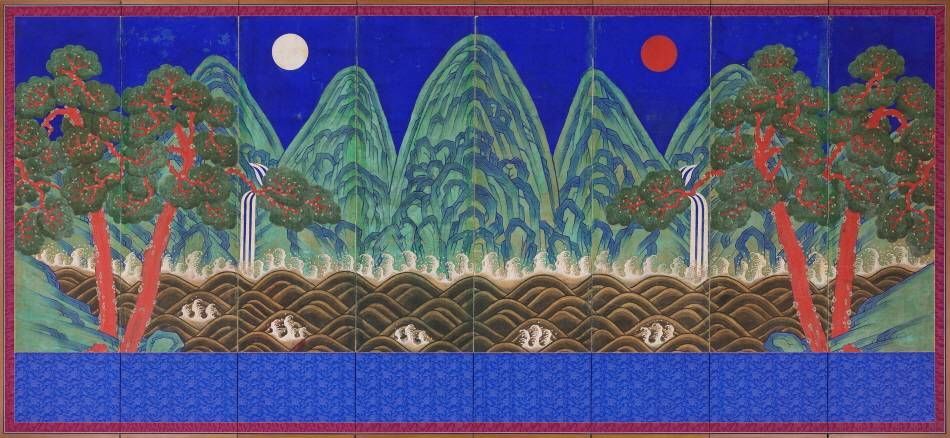
Irworobongdo (Painting of the Sun, Moon, and Five Peaks) ⓒNational Palace Museum of Korea
The powerful backdrop behind HUNTR/X’s “golden” stage features “Irworobongdo,” a traditional Korean folding screen painting. This piece, commonly placed behind the royal throne during the Joseon dynasty, depicts the sun, the moon, and five mountain peaks. The sun and moon represent the harmony of yin and yang, while the five peaks symbolize the natural cosmic order. One striking feature of the painting is the simultaneous depiction of the sun and moon, arranged in perfectly left-right symmetry. This unique composition is a hallmark of Joseon court art—distinctly Korean and not seen in the palace paintings of China or Japan.
▶ Recommended Travel Destinations
Gyeongbokgung Palace ⓒClipart Korea / Bukchon Hanok Village ⓒClipart Korea
Gyeongbokgung Palace, featured in Jinu’s flashback scene, was the beopgung—the principal royal palace and spiritual heart of the Joseon dynasty. Today, it remains one of the best places to experience the elegance of dancheong, Korea’s colorful traditional architectural painting, and to immerse oneself in Korea’s royal court culture. At Geunjeongjeon Hall, once the venue for state ceremonies, visitors can also admire the majestic Irworobongdo.
Located between Gyeongbokgung and Changdeokgung Palaces, Bukchon Hanok Village is home to hundreds of traditional Korean houses, or hanok. This charming neighborhood served as the backdrop for the emotional moment in the film when Rumi and Jinu sing together and come to understand each other. Renting a hanbok and strolling through its picturesque alleyways offers an unforgettable glimpse into Korea’s traditional charm.
- Address: 161 Sajik-ro, Jongno-gu, Seoul (서울특별시 종로구 사직로 161)
- Operating hours: 9:00–18:30
- Closed: Tuesdays
- Website: royal.khs.go.kr/gbg
- Address: 37 Gyedong-gil, Jongno-gu, Seoul (서울특별시 종로구 계동길 37)
- Operating hours: 10:00–17:00
- Website: hanok.seoul.go.kr
3. Seoul: Where the Everyday Korean Life Comes Alive
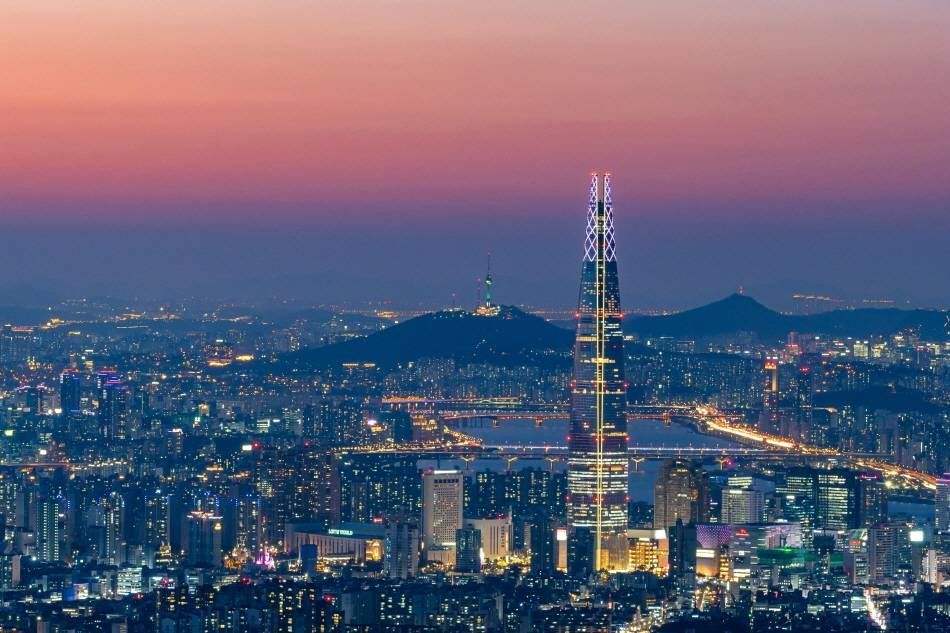
Night View ⓒClipart Korea
The world of the film isn’t confined to myths and legends. Another main character in “KPop Demon Hunters (2025)” is none other than the vibrant, modern city of Seoul. Stepping out of the world of spirits and folklore, we now enter the lively streets where the heartbeat of K-pop resonates—Seoul itself.
Namsan Seoul Tower ⓒSeoul Tourism Archive / Naksan Park ⓒKorea Tourism Organization Photo Korea - Lee Geum-seon
Namsan Seoul Tower serves as the setting for the film’s climactic final performance. While the stage shown in the movie is fictional, the tower is a real-life landmark of Seoul. Visitors can take the cable car up to the tower and enjoy sweeping views of the city—a favorite destination for tourists year-round.
Naksan Park, where Rumi and Jinu secretly meet, is a hidden gem for enjoying Seoul’s nighttime skyline. A peaceful stroll along the softly lit fortress wall offers a memorable experience, with the twinkling city lights spread out below.
Myeong-dong Street Food ⓒGetty Images Bank / COEX K-pop Square ⓒGangnam District Office
Myeong-dong, where Saja Boys hold a surprise guerrilla performance, is a bustling hotspot for shopping and street food. From tteokbokki (spicy rice cakes) and hotteok (sweet pancakes) to gyeranppang (egg bread) and tornado potatoes, it’s the perfect place to soak up the city’s vibrant energy while enjoying K-food just like the characters in the film.
COEX K-pop Square, where HUNTR/X’s “Golden” music video was revealed, is a media plaza dedicated to K-pop content. If you're lucky, you might catch one of its signature 3D media art displays—a popular photo spot for visitors to Seoul.
- Address: 105 Namsangongwon-gil, Yongsan-gu, Seoul (서울특별시 용산구 남산공원길 105)
- Operating hours: 10:00-22:30
- Website: www.seoultower.co.kr
- Address: Myeongdong-gil Area, Jung-gu, Seoul (서울특별시 중구 명동길 일대)
- Address: 41 Naksan-gil, Jongno-gu, Seoul (서울특별시 종로구 낙산길 41)
- Address: 513 Yeongdong-daero, Gangnam-gu, Seoul (서울특별시 강남구 삼성동 영동대로 513)
TIP. Still Haunted by Saja Boys?
1. Go Ghost-Hunting—K-Style
- A living museum that faithfully recreates the daily life and culture of the Joseon dynasty. During the summer, it transforms into “Simya Gongpochon,” a haunted village experience themed around traditional Korean ghosts.
- Event period: Ongoing until August 24, 2025
- Address: 90 Minsokchon-ro, Giheung-gu, Yongin-si, Gyeonggi-do (경기도 용인시 기흥구 민속촌로 90)
[Baekje Cultural Land]
- Explore palaces and homes from the ancient Baekje Kingdom—then date to enter Hyeolchon, a chilling horror experience set amid the royal grounds. Pose with Korean ghosts in your rented hanbok for a truly memorable photo.
- Event period: Ongoing until October 31, 2025
- Address: 455 Baekjemun-ro, Gyuam-myeon, Buyeo-gun, Chungcheongnam-do (충청남도 부여군 규암면 백제문로 455)
- Website: www.bhm.or.kr
2. Visit K-Occult Hotspots in Seoul
- 1330 Korea Travel Helpline: +82-2-1330
- 1330 Text Chat: https://m.site.naver.com/1rEid
- (Korean, English, Japanese, Chinese, Russian, Vietnamese, Thai, and Indonesian)
* This column was last updated in Aug 2025, and therefore information may differ from what is presented here. We advise you to check for updates before visiting.


